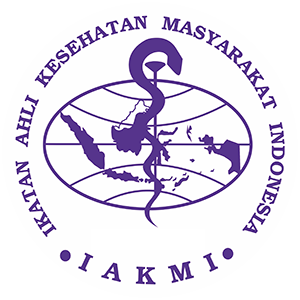Dysmenorrhea and Practice of Menstrual Hygiene in Adolescent Females
DOI:
https://doi.org/10.30787/gaster.v22i1.1427Keywords:
adolescents, menstruation, Dysmenorrhea, hygieneAbstract
Background: Adolescence is a relatively fast period of physical change experienced by adolescents when puberty is marked by the first menstruation (menarche). Menstruation and menstrual habits continue to encounter numerous social, cultural, and religious barriers, which make it extremely difficult to maintain good hygiene during the menstrual cycle. Objective: Analyzing menstruation practices and the prevalence of dysmenorrhea in adolescent female is the goal of this study. Method: The cross-sectional investigation was carried out in Sukoharjo and Surakarta. The research was carried out between December 2023 and January 2024. Adolescent female samples had reached menarche. WaLIDD score is an instrument used to measure dysmenorrhea. Results: The results of this study show as many as 71.7% of Menarche adolescent girls at the age of 12-14 years. As many as 44.4% of respondents said dysmenorrhea almost always interfered with work activities. Data also shows that nearly 100 % of respondents wash their hands before and after replacing menstrual materials. The majority of them wash their genitals using soap (79.1%) and replace pads (>3 times) 72.5%. Conclusion: Most respondents practice good menstrual hygiene, characterized by frequent washing of hands and genitals. Adolescent females who are knowledgeable about their periods can make hygienic and safe menstrual habits.
References
Azagew, A.W., Kassie, D.G., Walle, T.A., 2020. Prevalence of primary dysmenorrhea, its intensity, impact and associated factors among female students’ at Gondar town preparatory school, Northwest Ethiopia. BMC Womens Health 20, 5. https://doi.org/10.1186/s12905-019-0873-4
Best, O., Ban, S., 2021. Adolescence: physical changes and neurological development. British Journal of Nursing 30, 272–275. https://doi.org/10.12968/bjon.2021.30.5.272
Burnett, M., Lemyre, M., 2017. No. 345-primary dysmenorrhea consensus guideline. Journal of Obstetrics and Gynaecology Canada 39, 585–595.
Dasgupta, A., Sarkar, M., 2008. Menstrual hygiene: How hygienic is the adolescent girl? Indian Journal of Community Medicine 33, 77. https://doi.org/10.4103/0970-0218.40872
De Sanctis, V., Rigon, F., Bernasconi, S., Bianchin, L., Bona, G., Bozzola, M., Buzi, F., De Sanctis, C., Tonini, G., Radetti, G., Perissinotto, E., 2019. Age at Menarche and Menstrual Abnormalities in Adolescence: Does it Matter? The Evidence from a Large Survey among Italian Secondary Schoolgirls. The Indian Journal of Pediatrics 86, 34–41. https://doi.org/10.1007/s12098-018-2822-x
Fernández-Martínez, E., Onieva-Zafra, M.D., Parra-Fernández, M.L., 2019. The Impact of Dysmenorrhea on Quality of Life Among Spanish Female University Students. Int J Environ Res Public Health 16, 713. https://doi.org/10.3390/ijerph16050713
Habibi, N., Huang, M.S.L., Gan, W.Y., Zulida, R., Safavi, S.M., 2015. Prevalence of Primary Dysmenorrhea and Factors Associated with Its Intensity Among Undergraduate Students: A Cross-Sectional Study. Pain Management Nursing 16, 855–861. https://doi.org/10.1016/j.pmn.2015.07.001
Hickey, M., 2003. Menstrual disorders in adolescence: investigation and management. Hum Reprod Update 9, 493–504. https://doi.org/10.1093/humupd/dmg038
House, S., Mahon, T., Cavill, S., 2013. Bookshelf: Menstrual Hygiene Matters: a resource for improving menstrual hygiene around the world. Reprod Health Matters 21, 257–259. https://doi.org/10.1016/S0968-8080(13)41712-3
Kapadi, R., Elander, J., 2020. Pain coping, pain acceptance and analgesic use as predictors of health-related quality of life among women with primary dysmenorrhea. European Journal of Obstetrics & Gynecology and Reproductive Biology 246, 40–44. https://doi.org/10.1016/j.ejogrb.2019.12.032
Kashyap, V., Choudhari, S.G., 2023. Menstrual Hygiene Problems and Challenges Faced by Adolescent Females in Rural Areas: A Narrative Review. Cureus. https://doi.org/10.7759/cureus.40438
Kaur, Rajanbir, Kaur, K., Kaur, Rajinder, 2018. Menstrual Hygiene, Management, and Waste Disposal: Practices and Challenges Faced by Girls/Women of Developing Countries. J Environ Public Health 2018, 1–9. https://doi.org/10.1155/2018/1730964
McKenna, K.A., Fogleman, C.D., 2021. Dysmenorrhea. Am Fam Physician 104, 164–170.
Nagy H; Carlson K; Khan MAB, n.d. Dysmenorrhea. [Updated 2023 Nov 12]. In: StatPearls [Internet] [WWW Document]. URL https://www.ncbi.nlm.nih.gov/books/NBK560834/ (accessed 2.3.24).
Sadeeqa, S., Latif, S., Afzal, H., Zafar, M., 2018. Pattern And Prevalance Of Menstrual Disoreders In Adolescents. Int J Pharm Sci Res 9, 2088–2099. https://doi.org/10.13040/IJPSR.0975-8232.9(5).2088-99
Sawyer, S.M., Azzopardi, P.S., Wickremarathne, D., Patton, G.C., 2018. The age of adolescence. Lancet Child Adolesc Health 2, 223–228. https://doi.org/10.1016/S2352-4642(18)30022-1
Teherán, A., Pineros, L.G., Pulido, F., Mejía Guatibonza, M.C., 2018. WaLIDD score, a new tool to diagnose dysmenorrhea and predict medical leave in university students. Int J Womens Health Volume 10, 35–45. https://doi.org/10.2147/IJWH.S143510
Thakur, H., Aronsson, A., Bansode, S., Stalsby Lundborg, C., Dalvie, S., Faxelid, E., 2014. Knowledge, Practices, and Restrictions Related to Menstruation among Young Women from Low Socioeconomic Community in Mumbai, India. Front Public Health 2. https://doi.org/10.3389/fpubh.2014.00072
Torondel, B., Sinha, S., Mohanty, J.R., Swain, T., Sahoo, P., Panda, B., Nayak, A., Bara, M., Bilung, B., Cumming, O., Panigrahi, P., Das, P., 2018. Association between unhygienic menstrual management practices and prevalence of lower reproductive tract infections: a hospital-based cross-sectional study in Odisha, India. BMC Infect Dis 18, 473. https://doi.org/10.1186/s12879-018-3384-2
Zahradnik, H.-P., Hanjalic-Beck, A., Groth, K., 2010. Nonsteroidal anti-inflammatory drugs and hormonal contraceptives for pain relief from dysmenorrhea: a review. Contraception 81, 185–196. https://doi.org/10.1016/j.contraception.2009.09.014
Downloads
Published
How to Cite
Issue
Section
License
Copyright (c) 2024 Gaster

This work is licensed under a Creative Commons Attribution-ShareAlike 4.0 International License.














